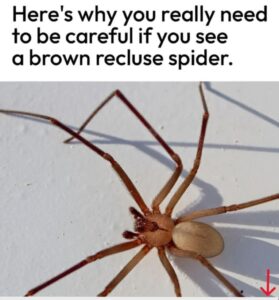Are Brown Recluse Bites Really That Dangerous? What You Should Know

The Brown Recluse spider often sparks fear across the United States, largely due to its distinct violin-shaped mark and its reputation for delivering dangerous bites. But while its name carries weight, the actual risk is often overstated. In reality, most encounters with this spider end without serious harm.
Where They Live and How They Behave
Brown Recluse spiders are mainly found in the central and southern regions of the U.S. They prefer hidden, quiet environments such as attics, basements, closets, and woodpiles. True to their name, they are reclusive creatures—shy, not aggressive—and usually only bite when they feel cornered or trapped. Many people unknowingly live in areas populated by these spiders without ever experiencing a single bite.
What Happens If You’re Bitten
The majority of Brown Recluse bites result in either mild irritation or no symptoms at all. In some cases, the bite may cause redness, swelling, or the formation of a blister. Very rarely, more severe reactions can occur, leading to tissue damage around the bite site. These extreme outcomes are unusual and not the norm.
How to Treat a Bite
For most bites, simple first-aid steps are all that’s required:
-
Clean the affected area with soap and water.
-
Apply a cold compress to reduce pain and swelling.
-
Keep an eye on the wound for changes.
In the unlikely event that symptoms worsen—such as spreading redness, open sores, or fever—medical attention should be sought immediately.
Prevention Tips
Avoiding a bite is often as simple as being cautious in spider-prone areas:
-
Shake out shoes and clothing before wearing them.
-
Store items off the floor.
-
Reduce clutter in dark, undisturbed spaces.
The Bottom Line
While the Brown Recluse spider has earned a fearsome reputation, the truth is far less alarming. With proper knowledge and a few preventive measures, you can coexist with these spiders without fear. There’s no reason to panic—just stay aware and cautious.